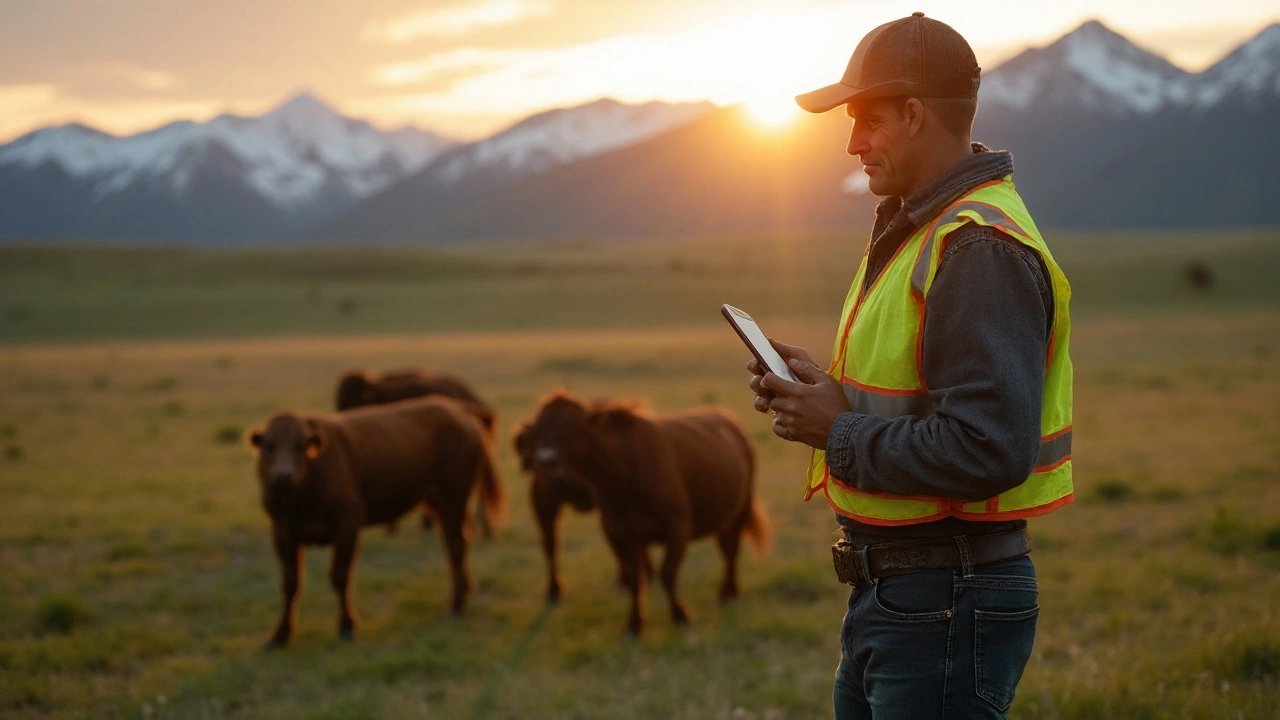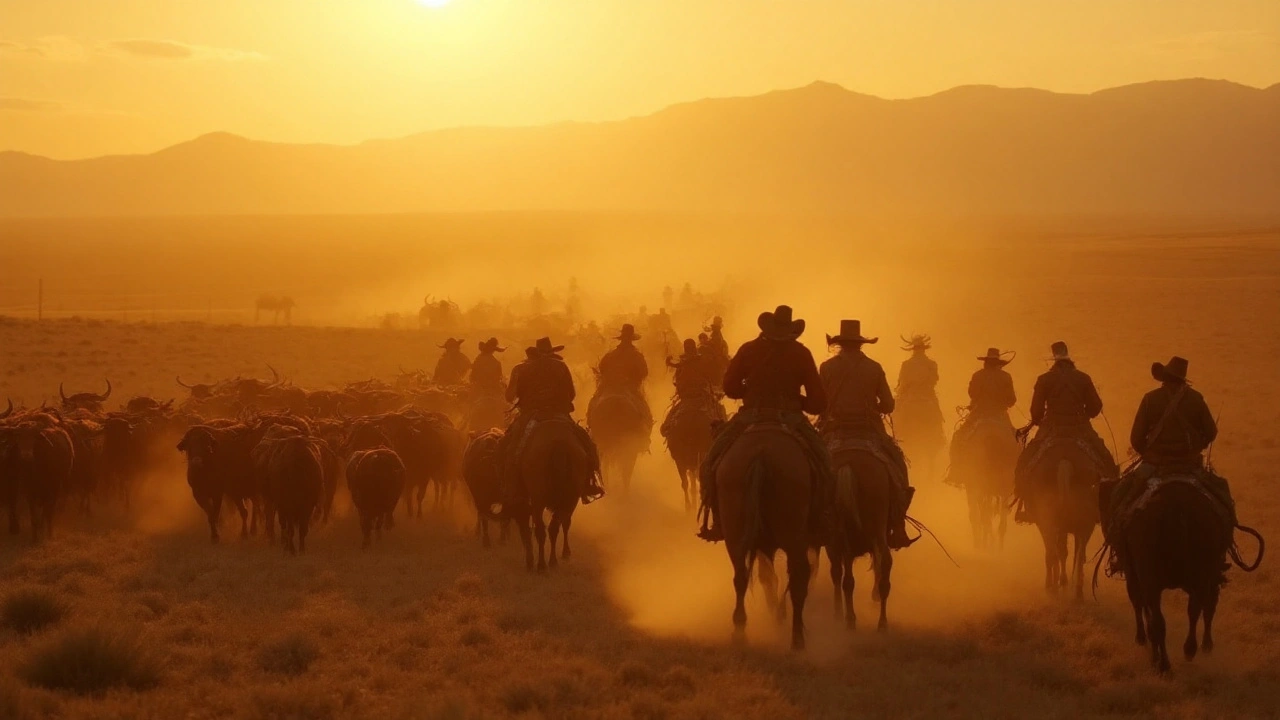Cowboy Salary Calculator
Cowboy is a ranch‑based laborer who herds, brands, and tends cattle across the North American West, traditionally employed by ranch owners. The image of a hat‑clad loner riding into the sunset masks a very practical question: do cowboys get paid and, if so, how much?
What Defines a Cowboy?
A cowboy is not just a character in Hollywood films; he is a distinct occupation rooted in the 19th‑century American frontier. According to the U.S. Bureau of Labor Statistics, the modern equivalent is a "ranch hand" or "livestock worker" who performs tasks such as moving cattle, maintaining fences, and caring for horses. While the romantic myth emphasizes gun‑fighting and roping, the real job revolves around hard, seasonal labor.
Historical Pay: The Old West Cattle Drive
During the post‑Civil War boom (1865‑1890), cowboys earned cash for each head of cattle driven to railheads. Primary sources like the Cattlemen's Association records show a typical wage of $30‑$40 per month, plus a "per‑head" bonus of 5‑10 cents. In today’s dollars, that translates to roughly $800‑$1,200 per month, a modest sum for grueling outdoor work.
Modern Cowboy Earnings
Today's cowboy salary varies by region, employer, and skill level. The National Agricultural Statistics Service reports an average annual pay of $38,000 for full‑time ranch hands in 2024. However, tiers exist:
- Entry‑level ranch hand: $25,000‑$30,000 per year.
- Experienced cowboy: $35,000‑$45,000 per year.
- Trail boss or foreman: $55,000‑$70,000 per year, often with profit‑sharing.
Seasonal spikes occur during calving or branding periods, when overtime and “hard‑day” bonuses are common.
Comparing Related Western Occupations
| Occupation | Average Salary (USD) | Typical Employer | Key Skill |
|---|---|---|---|
| Cowboy (ranch hand) | 38,000 | Ranch | Livestock handling |
| Rodeo rider | 22,000 | Self‑employed / Sponsors | Roping & riding |
| Trail boss | 63,000 | Ranch / Cattle drive company | Leadership & logistics |
| Ranch manager | 70,000 | Large commercial ranch | Business administration |

Factors That Influence Cowboy Pay
Several variables affect the actual paycheck:
- Geography: Ranches in Texas and Wyoming often pay more than those in New Mexico due to herd size.
- Experience: Skilled ropers and horse trainers command higher rates.
- Employment type: Seasonal contract work can include per‑head bonuses, while full‑time salaried positions may offer benefits.
- Market demand: Beef price spikes increase ranch revenues, sometimes trickling down to workers.
Understanding these levers helps a cowboy negotiate better terms.
Related Careers in the Western Labor Ecosystem
While the cowboy remains iconic, many adjacent roles share similar skill sets and pay structures:
- Ranch hand: Often the entry point, handling daily chores.
- Trail boss: Oversees cattle drives, earning a share of profits.
- Rodeo athlete: Earns prize money and sponsorships; income fluctuates with competition results.
- Equine trainer: Specialized horse care can fetch $45,000‑$60,000 annually.
- Livestock veterinarian: Provides critical health services; median salary around $95,000.
These roles illustrate a broader Western employment landscape beyond the lone cowboy.
Myths vs. Reality: Do Cowboys Live Off the Land?
The popular myth suggests that cowboys are independent freelancers living off the open range, earning enough to “buy a horse and keep the hat on”. In practice, most modern cowboys are salaried employees with health benefits, especially in larger operations. Historical accounts show many cowboys faced debt, relied on meat contracts, or supplemented income with side jobs like blacksmithing.
Film and television, from John Wayne to contemporary westerns, amplify the lone‑wolf image, but the economic reality has always been grounded in wages, contracts, and the occasional bonus.
How to Become a Paid Cowboy Today
If you’re eyeing a career that blends outdoor work with a slice of American heritage, follow these steps:
- Gain basic horse‑handling skills - community riding schools or 4‑H programs are great entry points.
- Learn cattle management - many vocational colleges offer short courses on livestock health and branding.
- Get certified in first aid and basic mechanics - ranch owners value self‑sufficiency.
- Seek seasonal work - agencies that place workers on Texas or Montana ranches often provide housing and a stipend.
- Network at rodeo events and livestock auctions - personal connections still drive hiring in this niche.
Average entry‑level compensation can start at $25,000, but with experience and a reputation for reliability, the annual salary can climb quickly.
Next Steps and Resources
Whether you’re a history buff, an aspiring rancher, or just curious about the real cowboy wage, explore these resources:
- National Ranchers Association - industry reports and job boards.
- “Cowboy: The Epic Story of an American Icon” - a comprehensive history with salary data.
- Local 4‑H clubs - hands‑on training and mentorship.
- USDA livestock extension services - up‑to‑date market trends that affect wages.
Understanding pay structures empowers you to negotiate fair terms and appreciate the enduring role cowboys play in America’s agricultural economy.

Frequently Asked Questions
Do modern cowboys still get paid per head of cattle?
Most full‑time ranch positions are salaried, but seasonal contract work often includes a per‑head bonus, especially during drives or sales months. The exact rate varies by employer and region.
What is the average annual cowboy salary in 2024?
According to the National Agricultural Statistics Service, the average full‑time cowboy earns about $38,000 per year, with experienced trail bosses making $55,000‑$70,000.
How does a cowboy’s pay compare to a rodeo rider?
Rodeo riders typically earn less on average ($22,000) because income depends on prize winnings and sponsorships, while cowboys receive steadier wages from ranch employment.
Are there benefits besides salary for cowboy jobs?
Many larger ranches provide health insurance, housing, and paid time off. Seasonal contracts may include meals and lodging but fewer formal benefits.
What skills are most valuable for increasing a cowboy’s wage?
Advanced horse training, rope handling, livestock health knowledge, and leadership (trail‑boss experience) can lead to higher pay and profit‑sharing opportunities.






